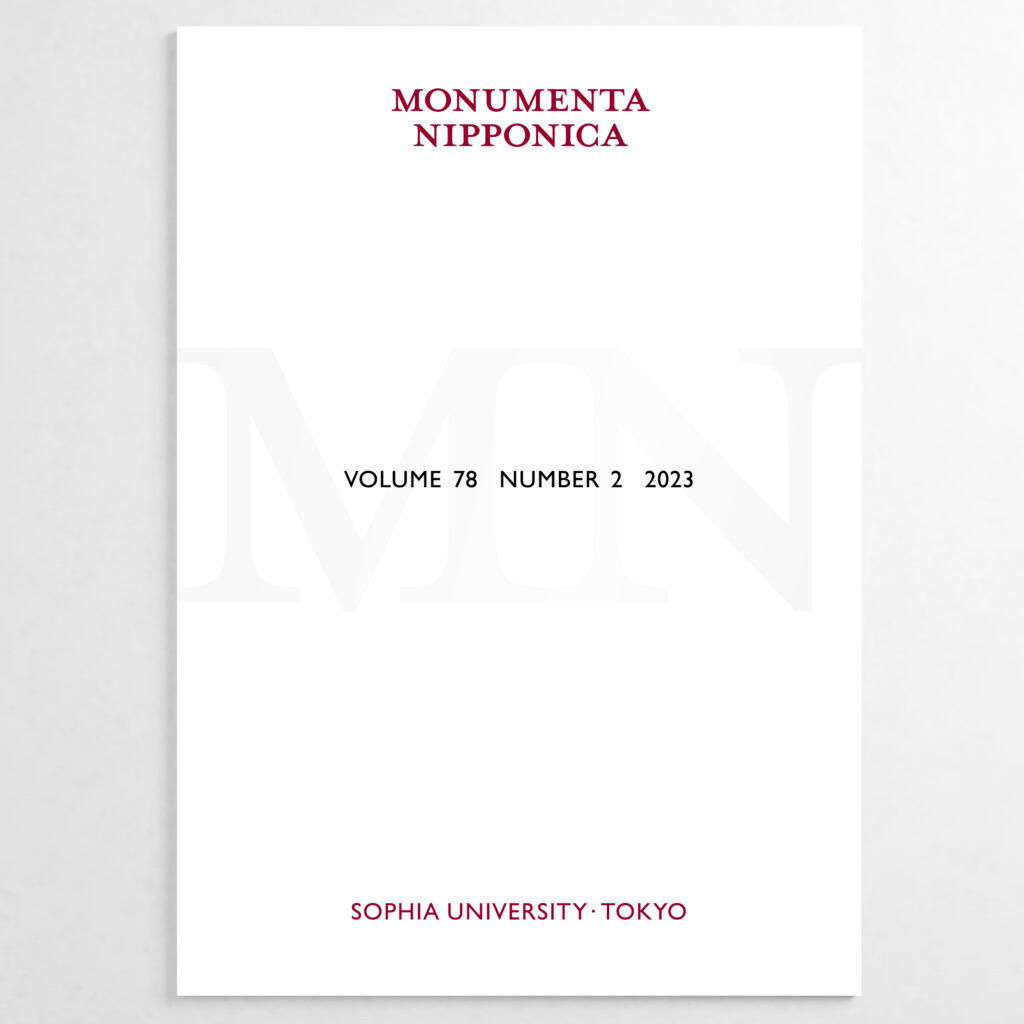Founded during the prewar period, Monumenta Nipponica is an English-language academic journal published by Sophia University in Tokyo that is dedicated to sharing with the world articles on Japanese thought, culture, history, and more.
A Place for International Scholars of East Asian Studies to Exchange Ideas and Research
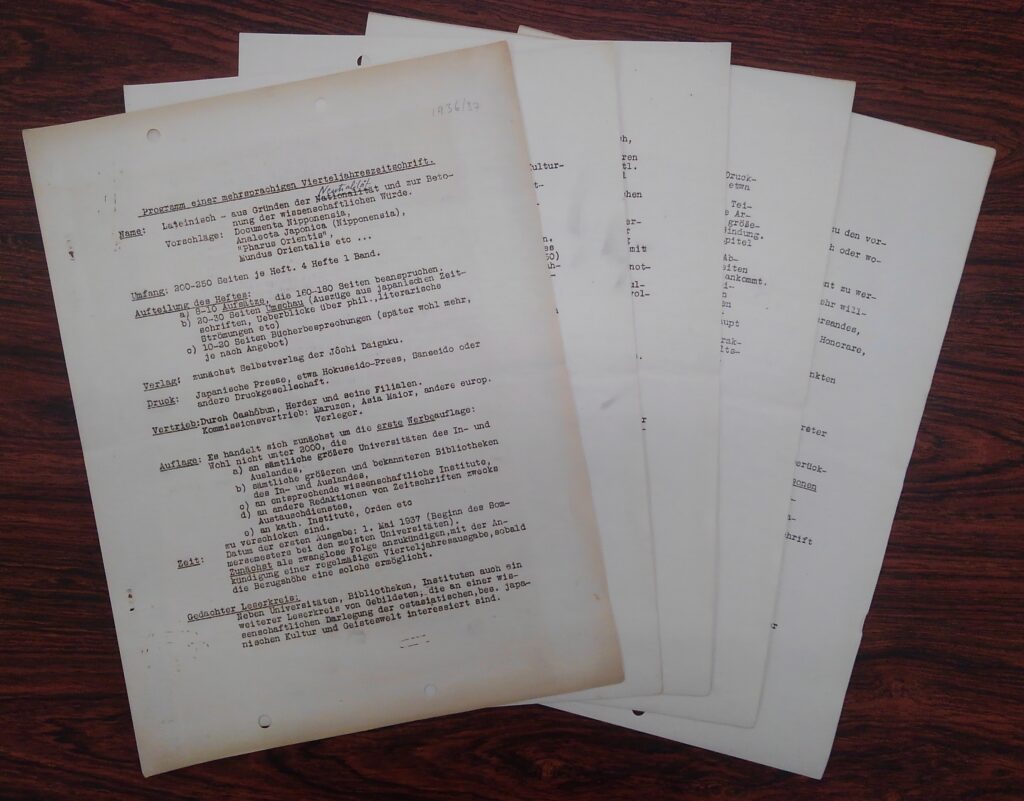
The preface of the inaugural issue of Monumenta Nipponica, titled “Aims and Objectives,” outlined its intended purpose: to create a place to share the “essential” and distinctive characteristics of East Asian cultures, particularly those of Japan, with scholars in Europe and America, as well as to connect scholars of East Asian studies globally. Monumenta Nipponica would focus on the past and present relationship between East and West and, furthermore, examine the period between 1550 and 1650, or what was called Japan’s “Christian Century.”
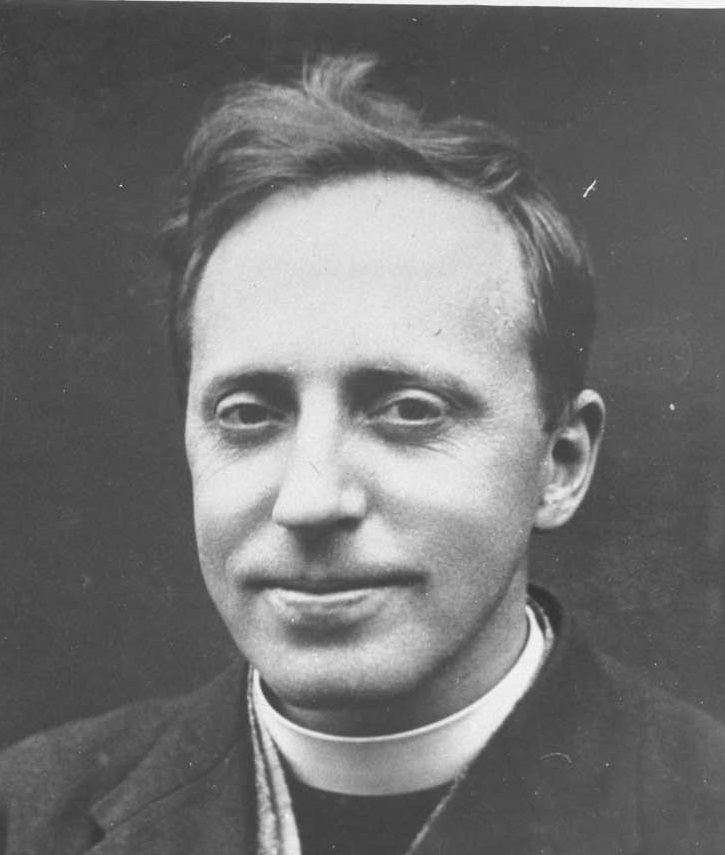
From historical records, it appears that development for Monumenta Nipponica began long before its publication. According to a project memorandum for the multilingual quarterly magazine believed to have been written by the first editor-in-chief, Father Johannes B. Kraus (1892–1946; editor 1938–1943), it is clear that even before the name Monumenta Nipponica had been chosen, the premise was to create a journal to introduce Japanese and East Asian culture to the world. The plans stated that the new journal would cover topics in East Asian humanities in a variety of European languages and would be published by Sophia University.
At the time, Father Kraus was teaching economics at Sophia University; he was also a Jesuit priest with an extensive global network. Moreover, his research and writings were not limited to his field but also branched into topics such as religion, philosophy, and contemporary Japanese thought and culture. The first volume of Monumenta Nipponica was published in 1938 with the support of his fellow faculty and staff at Sophia University and included contributions from researchers from around the world, possibly attracted not only due to their interest in the journal’s aims but also through Father Kraus’s enthusiasm and connections.
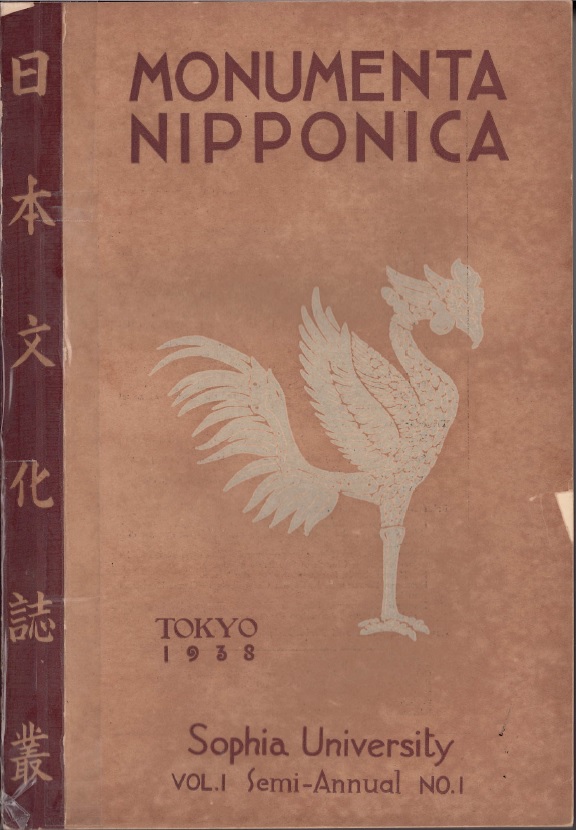
In July of the same year, Monumenta Nipponica subsequently published its second issue (volume 1, number 2). While it did not become a quarterly publication as originally envisioned, it was nonetheless well received by media and academic circles in Japan and abroad for its articles, translations, and essays on a wide variety of topics such as Japanese performing arts, literature, religion, thought, and the history of Christianity.
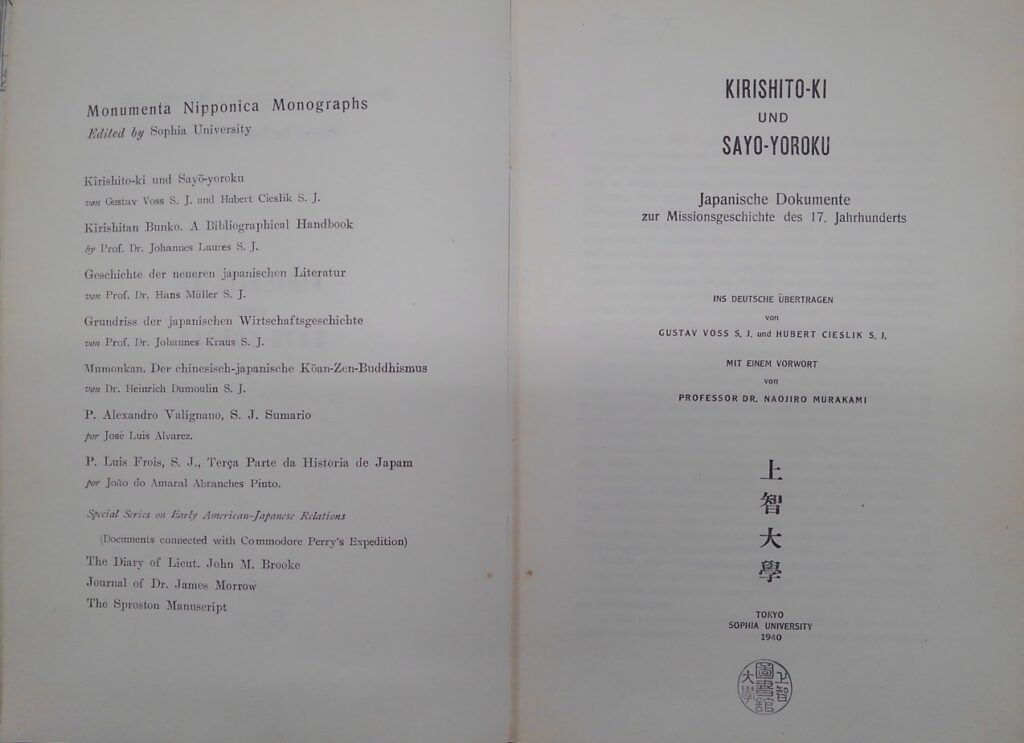
In 1940, in addition to the main journal, publication of the Monumenta Nipponica Monographs, a series dedicated to translation and research on East Asia for global audiences, began. The first book included German translations by Father Gustav Voss (1912–1990) and Father Hubert Cieslik (1914–1998) of the Kirisuto and the Sayōyoroku, texts that documented the prohibition of Christianity by the shogunate during the Edo period.
Wartime Setbacks and Revival
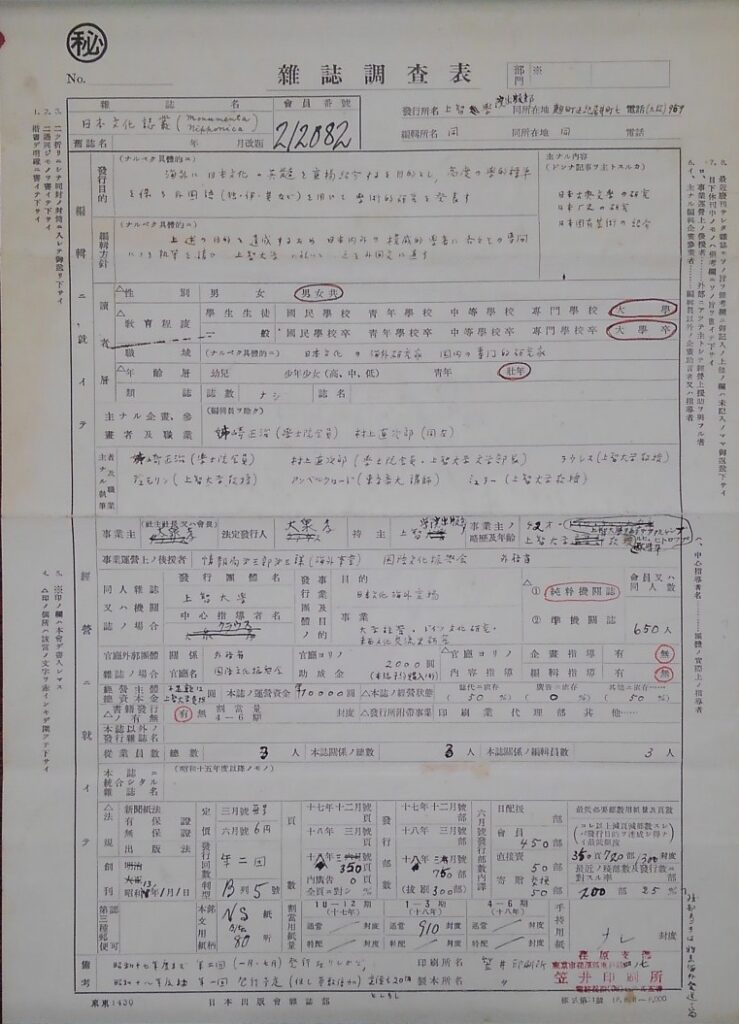
Although Monumenta Nipponica continued to gain Sophia University international attention for Japanese studies, the journal was not immune from the global wartime chaos.
In 1941, the Japanese government asked the university to conserve printing paper due to a domestic paper shortage. Despite this, the journal was at first able to maintain its biannual publication schedule. But as wartime conditions worsened, so too did the situation for printed publications. According to the “Survey of Periodicals” taken around 1943–1944, a plan was set in place to reduce publication to only once a year, but with an increased page count. But after the publication of volume 6, a joint issue, in May of 1944, production was halted. Not long after, the campus and neighborhood surrounding Sophia University were damaged during the Tokyo Air Raid, and in 1946, the founding editor-in-chief, Father Klaus, passed away. In the lingering devastation of the war, Monumenta Nipponica remained inactive until 1950.
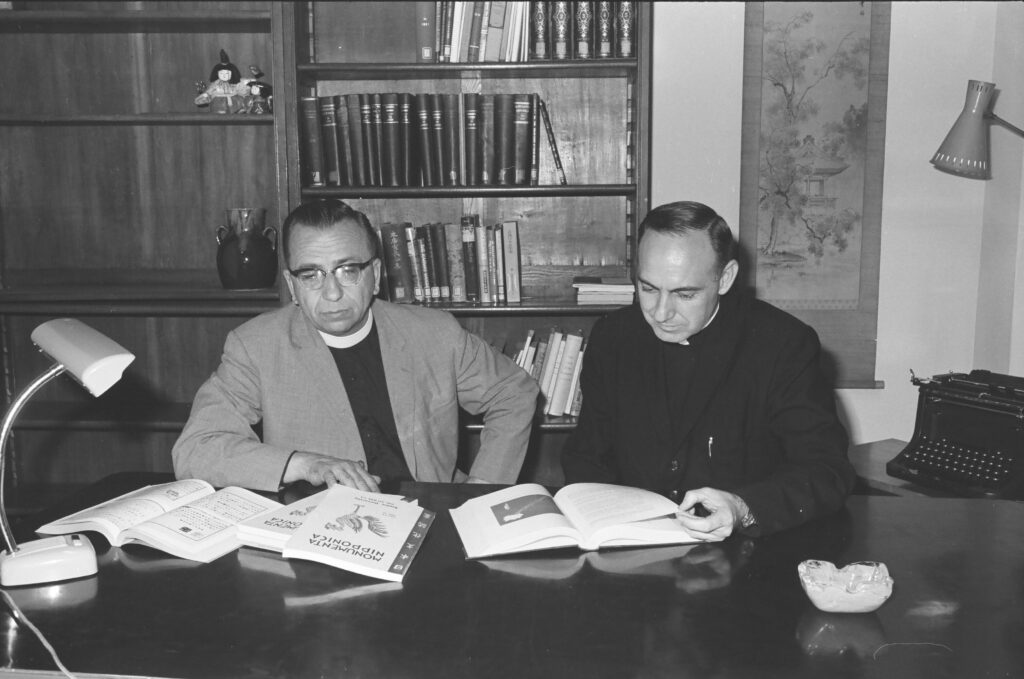
Even in the midst of adversity, however, efforts were made to recommence publication of Monumenta Nipponica. In 1951, owing to contributions made by the second editor-in-chief, Father Wilhelm Schiffer (1914–1972; editor 1951–1963), and others, volume seven was finally published—the first release in seven years. Later, the journal was intermittently co-edited by Father Schiffer and Father Francis Massey (1925–2015; editor 1962–1963). Today, Monumenta Nipponica continues to be published in both print and digital formats, with updates to its publication schedule and editorial policies.
Monumenta Nipponica Today and in the Future
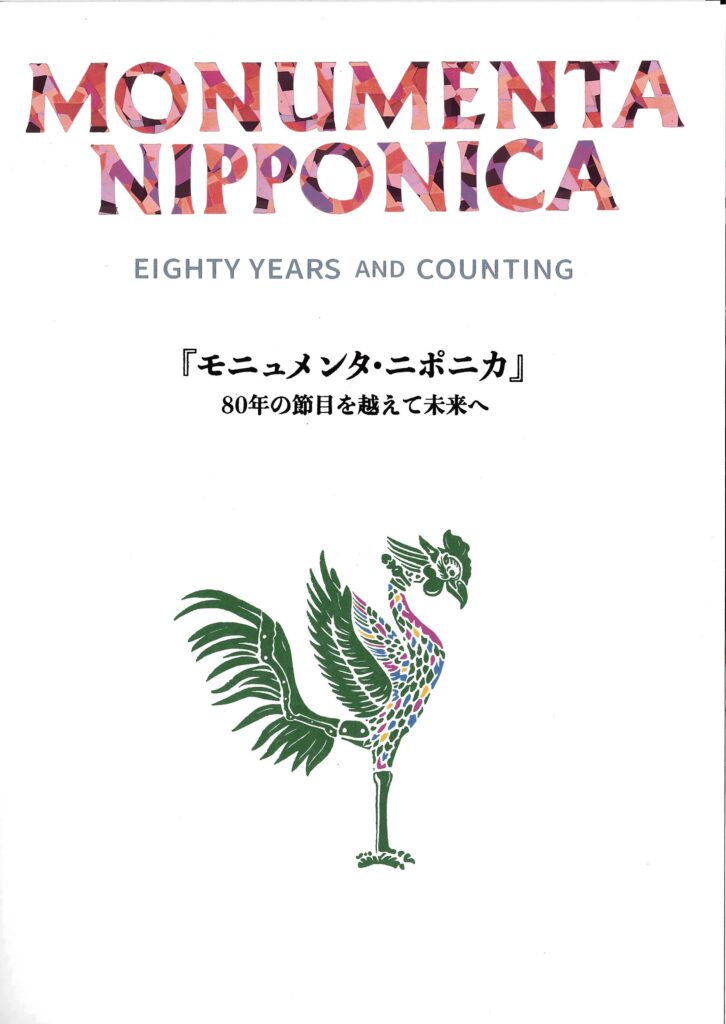
As of 2024, Monumenta Nipponica continues to adapt to the changing trends in research and publishing: on the official website, articles that go as far back as the inaugural issue may be searched for using specific criteria. Moreover, full-text versions may be accessed globally by universities and research institutions on fee-based online databases such as JSTOR and Project MUSE. From the very first issue to the latest, the fruits of research spanning decades is now available to a larger global audience.
In 2020, Monumenta Nipponica celebrated its 80th anniversary with a bilingual English and Japanese publication, “Monumenta Nipponica: Eighty Years and Counting,” to celebrate its history and look to the future. From today onwards, Monumenta Nipponica will continue to be an international forum for Japanese studies, connecting scholars from around the world.
(1) “Aims and Objectives.” Monumenta Nipponica Vol. 1, No. 1 (1938): 1.
(2) Starting from Vol. 19 (1964), the contents are written in English.
Photographs marked with * are from the collection of the Sophia Archives.
